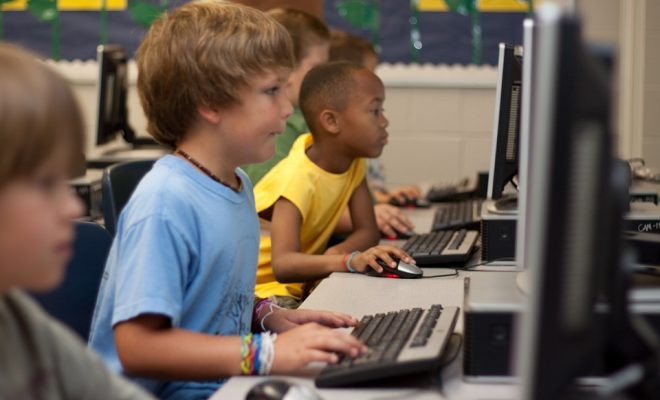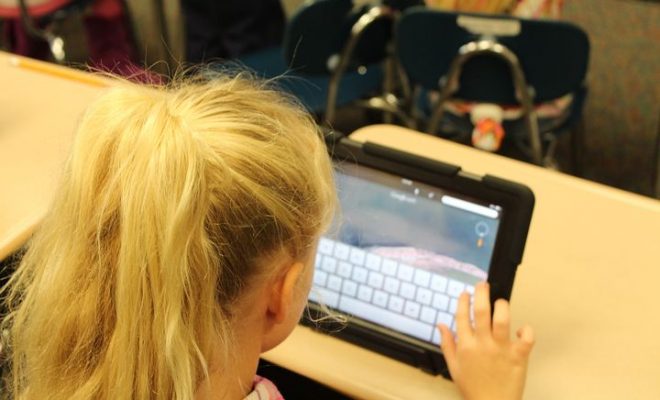How to Keep Students Safe While They are Online

Today’s students are surrounded by technology at school and at home. According to Common Sense Media, over 92% of youth interact online daily. Children and teens spend more time on phones and tablets than they spend with their families or on school work. The 21st century has transformed the way we communicate, collaborate, engage, and manage our lives. Within this shift, internet safety has assumed serious attention. Youth are more tech-savvy than adults, but they don’t always recognize the consequences and impact of their online activity.
This reality drives the need to cultivate sensible online practices for students. We need to pursue safe internet activity both inside and outside of school. A sound digital framework begins at the start of formal schooling. These skills should be embedded in instruction, not separate components to teach. Schools are overloaded with curricula, common core standards, and local guidelines, so digital safety needs natural implementation.
Student Benefits of Responsible Internet Use
It is important to acknowledge the advantages students gain when learning in a responsible digital environment. Here is a list of benefits shared by Educational Technology and Mobile Learning.
- Prepares students to navigate the web safely and confidently.
- Helps students learn about ethical issues on the web.
- Helps students think critically about their online identities.
- Students learn about the impact of their digital footprints.
- Students are taught skills to deal with potential incidences of cyberbullying.
Guidelines and Standards for Internet Safety
The Children’s Internet Protection Act (CIPA) became law in 2000. Guidelines from this law require schools to monitor and protect students’ internet activity in order to receive certain federal funding. The International Society for Technology in Education (ISTE) generated national standards for administrators, teachers, and students to follow. These principles are listed and explained on the ISTE website. To accomplish the goals stated in the national standards as well as ideals laid out by CIPA, schools need to become committed to a comprehensive digital citizenship plan. Through this framework, a healthy technology climate is possible.
It is imperative that teachers buy into endorsing, demonstrating, and monitoring acceptable internet behavior. According to ISTE Standards for Teachers, this involves, “Teachers understanding local and global societal issues and responsibilities in an evolving digital culture and exhibiting legal and ethical behavior in their profession’s practices.”
Steps Schools Can Take for Digital Safety
A safe digital agenda requires a shared vision supported by core technology beliefs. Input from all school stakeholders should be heard and considered to set a collaborative tone for schools and families. Students are more likely to comply with internet guidelines if they have ownership in the platform for which these rules are based. This platform involves ongoing discussion on digital responsibility within their classrooms throughout the school year.
An online binder can be created for staff to share digital resources with colleagues and parents. Faculty meetings should allow time for frequent communication focused on the digital activity. This practice will deter misunderstandings or variance in expectations within the school. Just like students, teachers make mistakes. Instead of singling out people for mishandled technology matters, these sessions will create an opportunity for teachable moments for the staff to develop and grow.
Schools must help parents manage their children’s digital activity at home. When updating parents on school-wide policies, parents should sign an acceptable use policy. This practice will attach parental accountability to the plan. Parent involvement offers families comfort knowing about their children’s technology involvement at school while also encouraging them to use similar practices at home.
Conclusion
Digital citizenship doesn’t have to be an extraneous model. Its core concepts are addressed within the traditional school curriculum. These topics include mindfulness, kindness, sound reasoning, integrity, and character. According to Common Sense Media, it is important to connect students’ digital lives with their activity outside of technology. “Digital citizenship must become part of our school culture…the way we do business in education.” Internet safety is a critical skill set that should be offered to students throughout their schooling. It’s difficult to predict the future of technology, but the need for guidance and support in digital activities is necessary and inevitable. As educators, we must be willing and prepared to handle this need.





